Disclosure: This article contains affiliate links. We may earn a commission from purchases at no extra cost to you, which helps our travel content.
The first time I laid eyes on Marina Bay's skyline, my camera was already halfway out of my bag before I'd even stopped walking. That's the effect this architectural marvel has on photographers. Having documented monasteries across remote mountain passes and ancient structures in forgotten valleys, I found myself equally captivated by this thoroughly modern cityscape. Marina Bay represents Singapore's ambitious vision—where futuristic architecture meets thoughtful urban planning, all wrapped around a body of water that acts as nature's perfect reflector. Whether you're wielding a professional DSLR or simply have your smartphone at the ready, this bay offers compositions that seem almost unfairly photogenic. After five visits over the years (and countless memory cards filled), I've compiled this guide to help you capture this iconic skyline in all its glory—from the technical settings that will make your images pop to the hidden spots most tourists miss.
Best Photography Locations Around Marina Bay
Marina Bay's 3.5km promenade offers a 360-degree canvas of photographic opportunities, but not all spots are created equal. After methodically working my way around the entire bay (three times, in different seasons), I've identified the prime locations that consistently deliver stunning results.
Merlion Park sits at the mouth of the Singapore River and provides the classic postcard shot with the Merlion statue in the foreground and the Marina Bay Sands hotel forming a perfect backdrop. Position yourself slightly to the left of the Merlion for the most balanced composition. The area gets extremely crowded during golden hour, so arrive at least 45 minutes before your intended shooting time to secure a prime spot.
Esplanade Bridge offers elevated views that allow you to capture the full curvature of the bay. I've found the midpoint of the bridge provides the perfect angle for sunset shots when the CBD buildings catch the golden light. During my last visit, I spent two hours here with my tripod, experimenting with long exposures as the sky transitioned from golden hour to blue hour.
The Helix Bridge provides a futuristic architectural element that can serve as both subject and framing device. The DNA-inspired design creates fascinating leading lines, particularly at night when its lighting system activates. Position yourself at the Marina Bay Sands end of the bridge looking back toward the CBD for a composition that includes both the bridge's curve and the skyline.
Gardens by the Bay offers a reverse perspective of the bay, with the Supertree Grove providing an otherworldly foreground to the financial district skyline. The elevated walkway between the Supertrees (called the OCBC Skyway) costs a few Singapore dollars but delivers unparalleled elevated compositions.
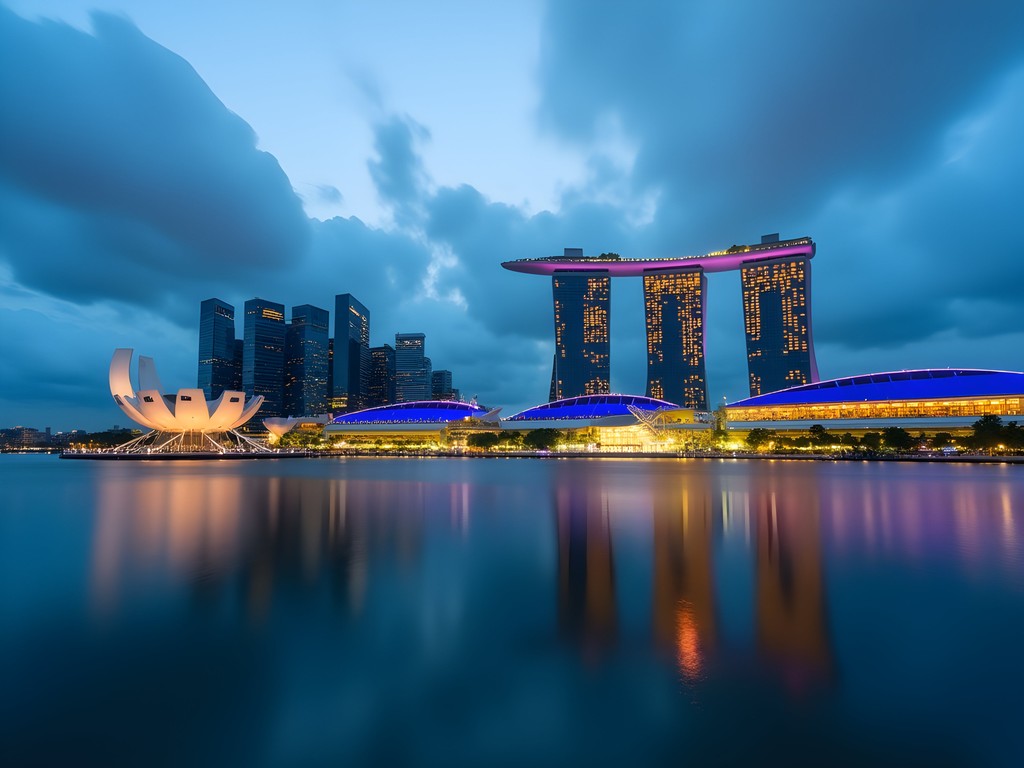
💡 Pro Tips
- Visit each location twice—once during daylight and once after dark—as they transform completely
- The Jubilee Bridge provides less crowded alternatives to the Esplanade Bridge with similar views
- For reflections, visit after rain or in early morning when the bay water is calmest
Timing Your Shoot: Light Conditions & Weather Considerations
Singapore sits just one degree north of the equator, which means two things for photographers: consistent year-round daylight hours and rapidly changing light conditions. Unlike my shoots in Northern Spain where summer golden hours stretch luxuriously for nearly an hour, Singapore's transition from daylight to darkness happens with startling speed.
Golden Hour arrives approximately 6:15-7:00pm throughout the year with minimal seasonal variation. What the golden hour lacks in duration, it makes up for in intensity—the tropical light bathes the glass facades of Marina Bay in rich amber tones that create spectacular highlights and shadows. I've found that starting your session 30 minutes before sunset gives you time to capture both the golden light and the rapid transition into blue hour.
Blue Hour (7:00-7:30pm) is arguably Marina Bay's photographic prime time. The 20-minute window after sunset when the sky retains deep blue tones while buildings illuminate creates the perfect balance between natural and artificial light. During my February visit, I captured a series of 30-second exposures as the sky darkened, each image revealing a different mood as the balance shifted.
Weather Considerations in Singapore revolve around rain rather than temperature. The most predictable dry period runs from February through April, though afternoon thunderstorms can occur year-round. These storms, while briefly disruptive, often create dramatic cloudy backdrops and leave the air crystal clear afterward—perfect for photography. My rain cover has saved my equipment numerous times during sudden downpours.
Haze Conditions occasionally affect Singapore due to regional agricultural burning. Check the PSI (Pollutant Standards Index) readings before planning a dedicated photography session. Counterintuitively, slight haze can create atmospheric conditions that diffuse light beautifully during sunset, adding drama to your skyline shots.
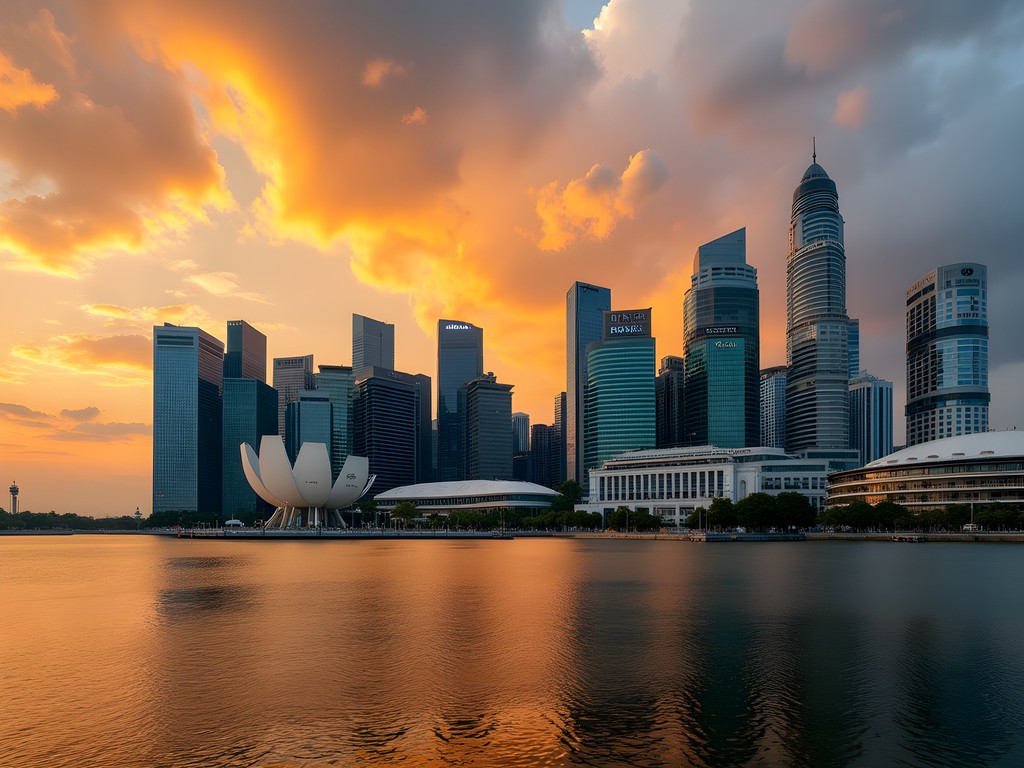
💡 Pro Tips
- Set up your equipment 30 minutes before your intended shooting time—light transitions happen quickly near the equator
- Carry microfiber cloths to combat lens condensation when moving between air-conditioned spaces and Singapore's humidity
- The Spectra Light & Water Show runs at 8pm and 9pm nightly, adding dynamic elements to night photography
Essential Camera Equipment & Settings
While Marina Bay is generous enough to reward even smartphone photographers with stunning images, having the right equipment and settings will elevate your captures from social media posts to wall-worthy prints. After multiple visits photographing this skyline in varying conditions, I've refined my equipment list to balance quality with portability.
Camera Body: A full-frame camera with good dynamic range handles the contrast between bright buildings and dark water admirably. However, any interchangeable lens camera (including crop-sensor models) will perform well. During my most recent visit, I primarily used my mirrorless camera, which excels in low-light conditions—crucial for blue hour shooting when you want to keep ISO values low.
Lenses: Marina Bay rewards both wide and telephoto perspectives. I typically carry: - A wide-angle zoom (16-35mm equivalent) for capturing the expansive skyline and architecture - A standard zoom (24-70mm equivalent) for versatile compositions - A telephoto zoom (70-200mm equivalent) for compressing perspective and isolating architectural details
During my last visit, I found myself using the wide-angle about 60% of the time, particularly from locations like Merlion Park where you want to capture the full sweep of the bay.
Essential Accessories: - A sturdy tripod is non-negotiable for blue hour and night photography - Neutral density filters for daytime long exposures that smooth the water - A remote shutter release to minimize camera shake during long exposures - Spare batteries—night photography drains power quickly
Camera Settings: For daytime skyline shots: - Aperture priority mode (A/Av) at f/8-f/11 for optimal sharpness across the frame - ISO 100-200 for maximum image quality - Exposure compensation often needed (-0.7 to -1.0 stops) to preserve highlight detail in bright buildings
For blue hour and night photography: - Manual mode with aperture at f/8-f/11 - ISO 100-400 depending on available light - Shutter speeds varying from 1-30 seconds (requiring a tripod) - Use your camera's 2-second delay timer or a remote release to avoid shake
For capturing the light shows, switch to shutter priority (S/Tv) mode at 1/15 to 1/4 second to create light trails while maintaining some definition.
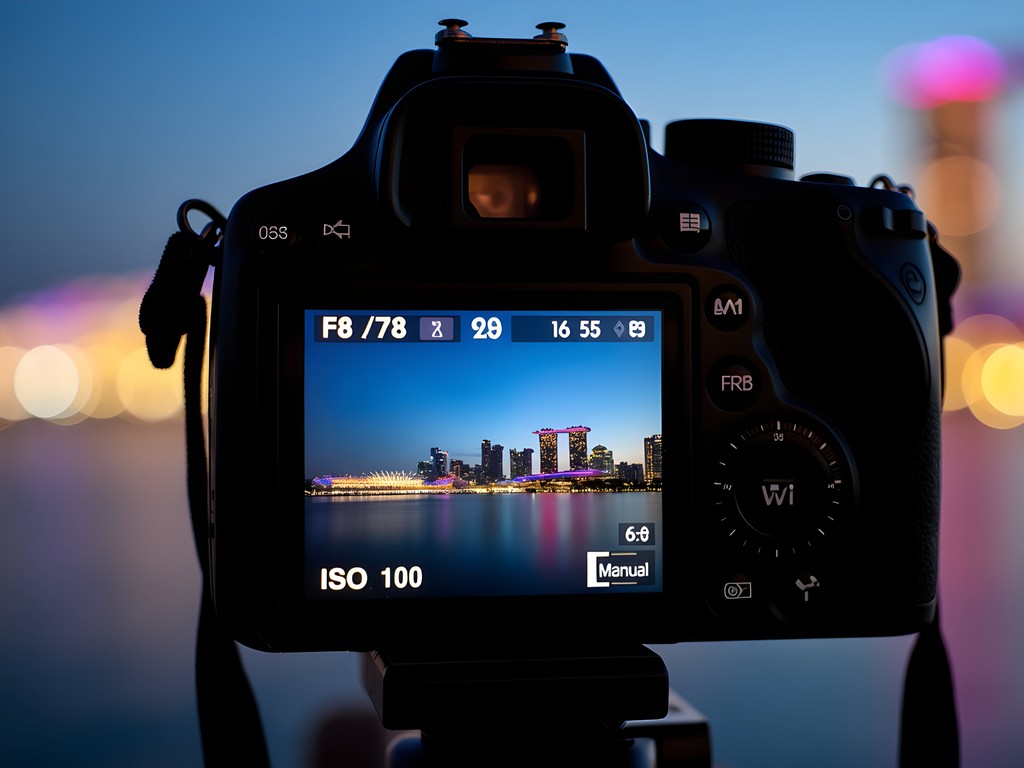
💡 Pro Tips
- Use your camera's highlight warning feature to avoid blowing out the bright lights of the buildings
- Bracket your exposures (±1 stop) when shooting high-contrast scenes to ensure you capture all details
- For smartphone photographers, use the HDR mode and a mini tripod for best results
Creative Composition Techniques
Marina Bay offers such a wealth of photographic opportunities that it's easy to fall into the trap of taking the same shots everyone else does. After multiple visits, I've developed several composition techniques that help create more distinctive and compelling images of this frequently photographed location.
Reflections as Foreground: The bay itself provides perfect mirror-like reflections, particularly in the early morning or after rain. Rather than centering the skyline in your frame, try positioning it in the upper third and allowing its reflection to fill the lower two-thirds. This creates a more dynamic composition that draws the viewer's eye through the image. My favorite spot for reflections is along the promenade near the Esplanade theaters, where protective barriers create small pools of exceptionally still water.
Architectural Framing: Marina Bay is surrounded by structures that make perfect natural frames. The arches under the Esplanade Bridge create window-like frames for the CBD skyline. Similarly, the curved interior of the ArtScience Museum frames Marina Bay Sands beautifully. Look for these architectural elements that can add depth and context to your compositions.
Leading Lines: The bay area is rich with leading lines that draw viewers through your images. The pedestrian paths along the waterfront, the curved edge of the bay itself, and the dramatic lines of The Helix Bridge all serve as powerful compositional elements. Position these lines to lead from the corners of your frame toward your main subject.
Scale Contrast: Include human elements to highlight the massive scale of Marina Bay's architecture. Pedestrians along the waterfront or boats on the water provide this sense of scale while adding narrative interest to your images. During evening hours, the long exposure will blur moving people into ghostly streaks that add a dynamic element to otherwise static architectural shots.
Layered Compositions: Rather than shooting flat perspectives of the skyline, look for opportunities to create layered compositions. From the Marina Barrage, you can capture Gardens by the Bay in the foreground, Marina Bay Sands in the middle ground, and the financial district as a background. These layers create depth and visual interest that flat skyline shots often lack.
Weather Elements: Don't pack away your camera when conditions seem less than ideal. Some of my most compelling Marina Bay images came from working with—rather than against—Singapore's tropical weather. Capturing lightning over the skyline during thunderstorms, or the dramatic clouds that follow rain showers, adds mood and uniqueness to your portfolio. My weather-sealed lens has proven invaluable during these challenging but rewarding shooting conditions.

💡 Pro Tips
- Look for unusual reflective surfaces beyond just water—glass building facades, puddles, and even polished granite benches
- Try vertical compositions to emphasize the height of the architecture and create more dynamic smartphone images
- Visit the same location at different times—the changing light transforms familiar compositions into completely new images
Beyond the Postcard: Unique Perspectives & Hidden Spots
After exhausting the classic viewpoints that grace Singapore's postcards, I found myself searching for perspectives that would offer something different. This quest led me to discover several lesser-known vantage points that provide fresh compositions of the Marina Bay skyline.
Marina Barrage sits at the southern end of Gardens by the Bay and offers a distant but comprehensive view of the entire bay area. What makes this location special is the elevated green roof that provides an unobstructed panoramic view. Most tourists don't venture this far south, making it relatively uncrowded even during peak hours. The walk is substantial (about 25 minutes from Marina Bay Sands), but the perspective—especially with a telephoto lens to compress the cityscape against the bay—is worth the effort.
OUE Bayfront Rooftop houses a restaurant with an outdoor observation deck that's accessible even if you're not dining there. Located on the opposite side of the bay from Marina Bay Sands, it provides a direct view across the water to the iconic hotel. The elevated position (around 5 stories up) creates a more dynamic angle than ground-level shots. I arrived just before sunset, ordered a single drink at the bar to justify my presence, and captured some of my favorite blue hour shots of the trip.
Jubilee Bridge is often overlooked in favor of the larger Esplanade Bridge just beside it. This pedestrian-only crossing provides stable shooting conditions without the vibration from passing traffic. The central position offers clean compositions of Marina Bay Sands flanked by the CBD skyline. During the twice-nightly light shows, this bridge offers unobstructed views without the crowds that gather at Merlion Park.
Marina Bay Sands SkyPark Observation Deck costs 26 SGD (about $19 USD) to access, but provides the reverse view that most photographers miss—looking back toward the city from atop the iconic hotel. While most visitors focus on the infinity pool (accessible only to hotel guests), the public observation deck on the same level offers equally impressive vistas. Arrive 30-45 minutes before sunset and stay through blue hour to maximize the changing light conditions.
Esplanade Outdoor Theatre features a small amphitheater with steps leading down to the waterfront. This spot offers a slightly elevated position with an unobstructed view across to Marina Bay Sands. The concrete steps provide natural leading lines for your composition, and the location is rarely crowded outside of performance times.
A final tip for the adventurous: several shopping malls around Marina Bay have public access to their upper-level parking structures, which offer unique elevated perspectives without the cost of formal observation decks. The Shoppes at Marina Bay Sands and Millenia Walk both have such opportunities if you're willing to explore.

💡 Pro Tips
- Visit the Singapore City Gallery in the URA Centre for access to their rooftop garden with panoramic views
- For photographers seeking reflections, the areas around The Promontory and One Fullerton offer the calmest water surfaces
- Early morning (5:30-7:00am) provides not only beautiful light but also the least crowded experience of Marina Bay
Final Thoughts
Marina Bay represents Singapore's remarkable transformation—a testament to human vision and engineering brilliance that provides photographers with an ever-changing canvas. What makes this location special isn't just its photogenic qualities, but how it rewards repeated visits with new perspectives and moods. Whether you're capturing the first light of dawn reflecting off glass facades or the last electric blues of twilight as the city illuminates, Marina Bay offers compositions that challenge and inspire.
As you explore this architectural playground, remember that the most compelling images often come from patience—waiting for that perfect alignment of light, weather, and composition. Don't rush from spot to spot; instead, spend time in each location, watching how the changing light transforms the scene before your lens. And while technical perfection matters, don't forget to occasionally lower your camera and simply absorb the spectacular panorama that unfolds around you.
I hope this guide helps you capture your own unique vision of Marina Bay. I'd love to see your results—tag me on Instagram or drop a comment below with your favorite Marina Bay photography spots!
✨ Key Takeaways
- Marina Bay transforms dramatically from day to night, offering entirely different photographic opportunities
- Early morning and blue hour provide the most magical light conditions for skyline photography
- Look beyond the obvious postcard spots to find unique compositions and perspectives
- Technical preparation matters—bring a tripod and appropriate filters for the best results
📋 Practical Information
Best Time to Visit
year-round (February-April offers clearest skies)
Budget Estimate
$100-200/day including accommodation
Recommended Duration
2-3 days
Difficulty Level
Beginner

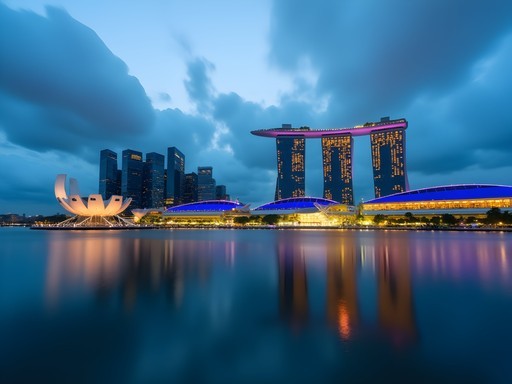

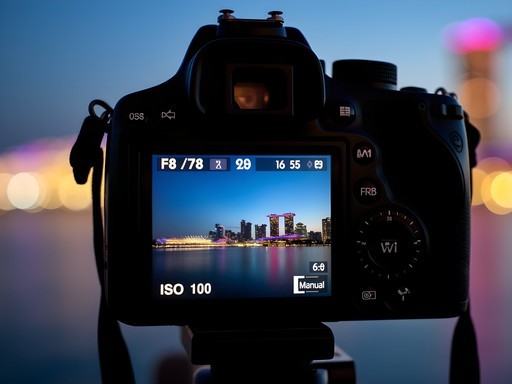
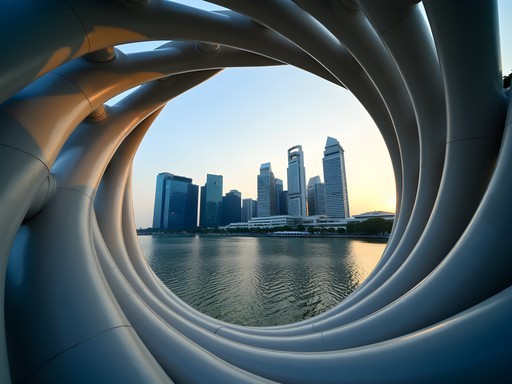
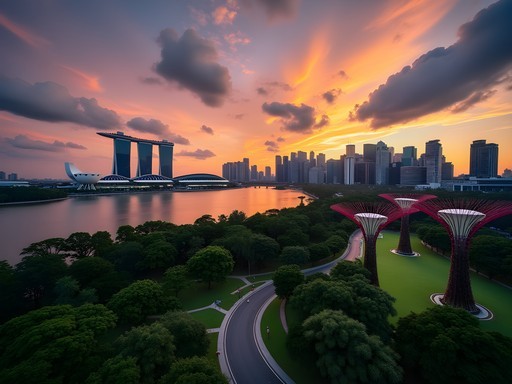


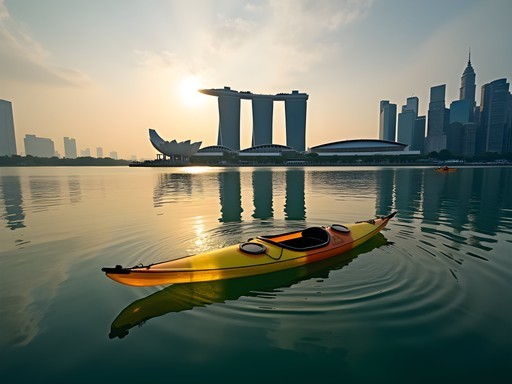






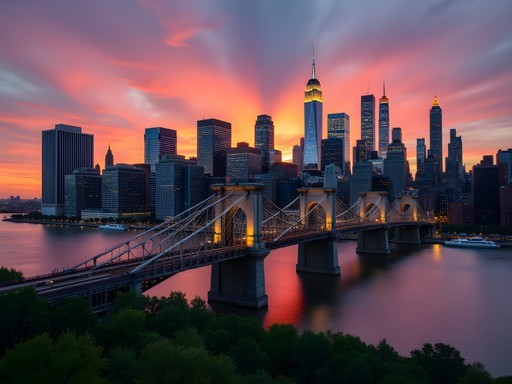
Comments
travelway
Pro tip for anyone heading there: download the Gardens by the Bay app before you go. It shows the exact Supertree light show timings which change seasonally. I found shooting from the Helix Bridge during the first show and then quickly moving to the Esplanade side for the second show (30 mins later) gave me two completely different perspectives in one evening!
oceanace
Great tip about the app! Never would have thought of that.
wanderlustdiver
Just got back from Singapore last week and followed your guide - it was incredibly helpful! The Jubilee Bridge viewpoint was my absolute favorite. I'd recommend anyone visiting to also check out the view from CE LA VI at Marina Bay Sands if you can afford a drink there (pricey but worth it for photographers). One thing I wish I'd known: my camera rain cover came in super handy during those sudden afternoon showers. Singapore's weather is so unpredictable! Got some amazing reflection shots after the rain cleared though.
islandclimber
Heading to Singapore next month for 3 days. Is it worth bringing my tripod or are there restrictions in most of the good photo spots?
wanderlustdiver
Definitely bring your tripod! I was there in January and used mine everywhere without issues. Just avoid blocking walkways during busy hours. The night shots are impossible without one!
islandclimber
Perfect, thanks! Was debating whether to pack light but sounds worth it for those night skyline shots.
Taylor Moreau
Excellent guide, Evelyn. I've photographed Marina Bay numerous times during business trips to Singapore over the years, and your location recommendations are spot on. I'd add that the walkway between Esplanade and the Floating Platform offers some unique angles that many photographers miss. The reflections in the bay during early morning (around 6:30am) can be spectacular if you catch the right conditions - fewer crowds too. Your advice on timing with the light show is particularly valuable for first-timers.
oceanace
Thanks for the early morning tip, Taylor! Do you find weekdays or weekends better for avoiding crowds?
Taylor Moreau
Definitely weekdays, especially Tuesday-Thursday. The weekend crowds can make tripod setups challenging in prime spots. Early mornings are quiet any day though.
oceanace
Just stunning photos! Marina Bay has been on my photography bucket list forever. The colors you captured at blue hour are magical!
islandone
Is it worth going up to the Marina Bay Sands observation deck for photos or are the ground-level spots better?
Sophia Gomez
Both offer completely different perspectives! The observation deck gives you that amazing aerial view of the city and Gardens by the Bay, while ground level lets you incorporate the water reflections. If your budget allows, I'd do both - sunset from above, blue hour from below.
photoone2241
Anyone know if they still do the laser show at 8pm and 9pm? Planning my visit for November.
triplegend
Yes, they do! Just checked the official website yesterday. It's at 8pm and 9pm on weekdays, with an extra 10pm show on weekends.
photoone2241
Perfect, thanks! Can't wait to try capturing it.
skyninja
Great post! I visited Marina Bay last year and wish I'd had this guide then. One thing I discovered by accident - the Gardens by the Bay light show viewed from the Marina Bay Sands side gives you both the supertrees AND the skyline in one shot. Definitely worth planning for if you're mapping out your photo spots.
Hunter Thompson
Brilliant guide, Evelyn! I was in Marina Bay last month and can confirm your timing tips are spot on. That golden hour light hitting the ArtScience Museum is pure magic! I'd add that the view from Esplanade Roof Terrace is criminally underrated - hardly any tourists and you get this amazing perspective of both the bay and the CBD skyline. One thing I learned the hard way: bring your lens cleaning kit because the humidity can fog up your glass faster than you'd expect. Singapore's weather is no joke for camera gear! Anyone else struggle with this?
hikingking
Thanks for the Esplanade tip! Did you need any special permits for photography there?
Hunter Thompson
Not for personal photography! Just can't use tripods in some spots. The security guards are actually super helpful if you ask nicely.
hikingking
Those night shots are absolutely stunning! Marina Bay is on my bucket list for next year.
Hunter Thompson
You won't regret it! The light show at night is even better in person.
hikingking
Any specific spot you'd recommend for viewing it?
Hunter Thompson
The Helix Bridge gave me the best angles! Not too crowded if you go on weeknights.
Venture X
Premium card with 2X miles, $300 travel credit, Priority Pass